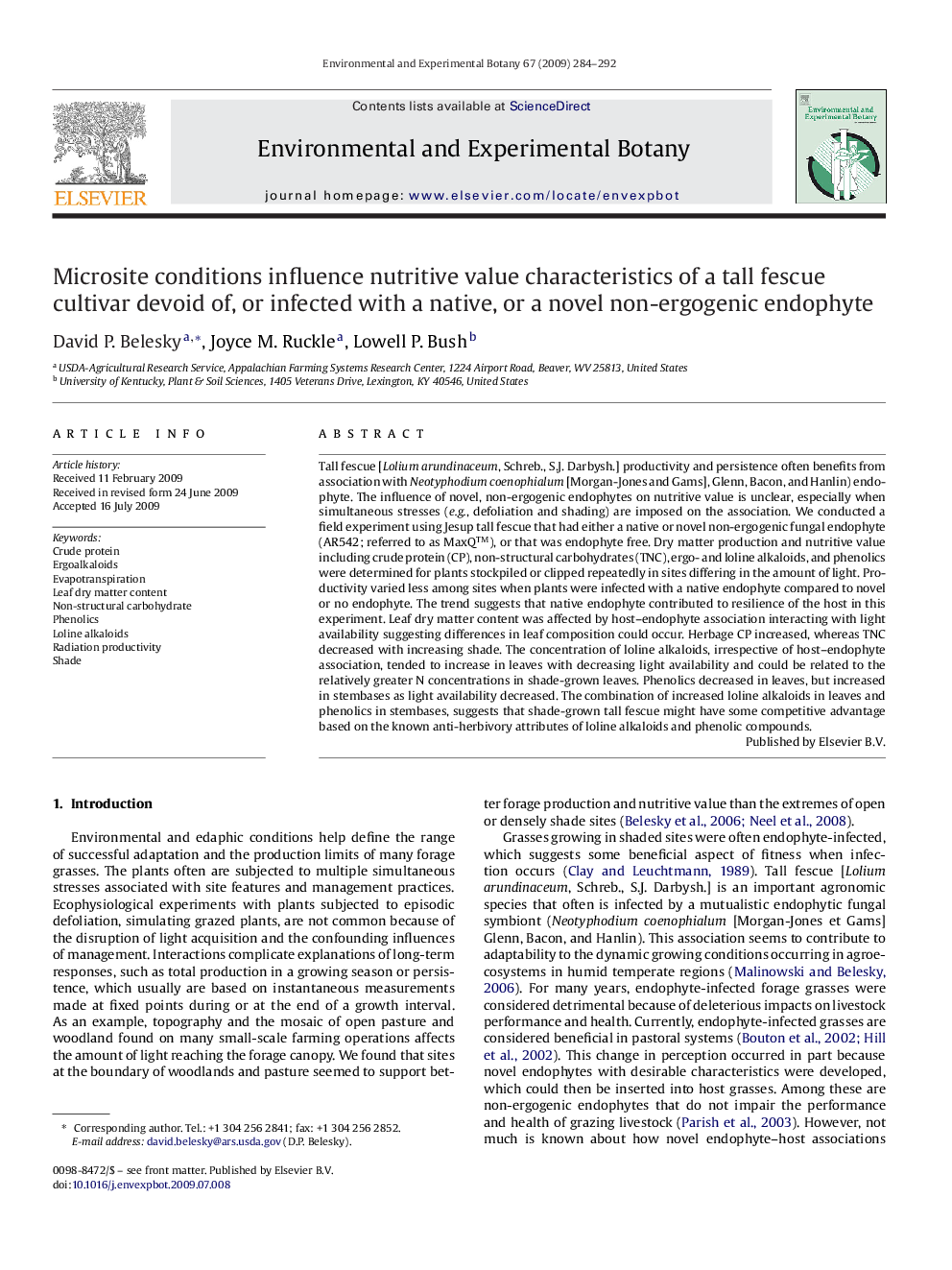| کد مقاله | کد نشریه | سال انتشار | مقاله انگلیسی | نسخه تمام متن |
|---|---|---|---|---|
| 4555062 | 1329241 | 2009 | 9 صفحه PDF | دانلود رایگان |

Tall fescue [Lolium arundinaceum, Schreb., S.J. Darbysh.] productivity and persistence often benefits from association with Neotyphodium coenophialum [Morgan-Jones and Gams], Glenn, Bacon, and Hanlin) endophyte. The influence of novel, non-ergogenic endophytes on nutritive value is unclear, especially when simultaneous stresses (e.g., defoliation and shading) are imposed on the association. We conducted a field experiment using Jesup tall fescue that had either a native or novel non-ergogenic fungal endophyte (AR542; referred to as MaxQ™), or that was endophyte free. Dry matter production and nutritive value including crude protein (CP), non-structural carbohydrates (TNC), ergo- and loline alkaloids, and phenolics were determined for plants stockpiled or clipped repeatedly in sites differing in the amount of light. Productivity varied less among sites when plants were infected with a native endophyte compared to novel or no endophyte. The trend suggests that native endophyte contributed to resilience of the host in this experiment. Leaf dry matter content was affected by host–endophyte association interacting with light availability suggesting differences in leaf composition could occur. Herbage CP increased, whereas TNC decreased with increasing shade. The concentration of loline alkaloids, irrespective of host–endophyte association, tended to increase in leaves with decreasing light availability and could be related to the relatively greater N concentrations in shade-grown leaves. Phenolics decreased in leaves, but increased in stembases as light availability decreased. The combination of increased loline alkaloids in leaves and phenolics in stembases, suggests that shade-grown tall fescue might have some competitive advantage based on the known anti-herbivory attributes of loline alkaloids and phenolic compounds.
Journal: Environmental and Experimental Botany - Volume 67, Issue 1, November 2009, Pages 284–292